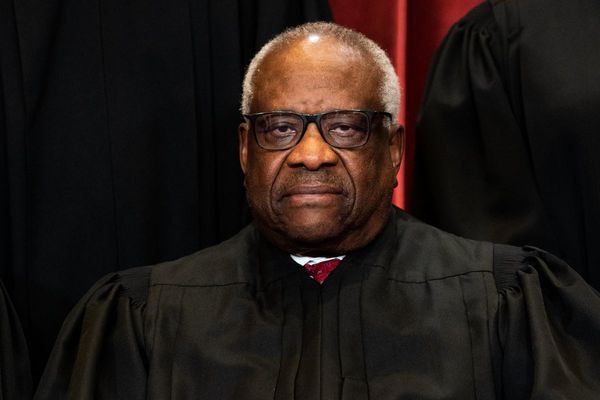
A collection of “Strange Labor facts” with scary music. Footage of a dog refusing to take a selfie with Scott Morrison. An augmented reality version of Parliament House that features a giant Shrek dancing above the building.
These are all short videos produced by Australia’s biggest political parties for the TikTok platform, and represent a new frontier in social media campaigning for the 2022 federal election campaign.
The 2019 election was the breakout for boomer memes — intentionally low-fi images with corny gags and simple messages shared on places like Facebook — as a digital strategy.
A digital marketing agency from NZ called Topham Guerin bragged about their “water on a stone” strategy for the Liberal Party, which hammered the same point home, as key to the Coalition’s surprise 2019 win.
In the fallout of the election, Labor’s postmortem of their campaign conceded that they lost the social media battle and that their digital strategy was treated as ancillary to the rest of the campaign.
A lot has changed since 2019.
While Facebook stalls, TikTok is ascendant. While the number of users still lags behind Facebook and Instagram, the short video platform counts more Australians as users than Twitter, Pinterest, Linkedin and Reddit, and only continues to grow.
Importantly, Australian TikTok users spend significantly more time on it than other apps — 23 hours a month compared with 17 hours on YouTube or Facebook according to a We Are Social and Hootsuite report. There’s millions of Australian voters who are ingesting hours of content through their TikTok For You Page every week.
This has drastically changed the rest of the digital landscape too. Other tech companies, fearing the runaway success of TikTok would loosen their grip on their own users, also “innovated” (in other words, they ripped off TikTok) by offering similar features like Instagram Reels and YouTube Shorts.
TikTok.com was the second most viewed domain linked to on Facebook in the last quarter, according to Meta’s most recent content report. While digital video like YouTube and Instagram Stories have featured in election campaigns in the past, the short, social video format that is defined by TikTok is now king.
Curtain University’s Tama Leaver says the platform’s popularity exploded during the COVID-19 pandemic which was a political moment: “During the pandemic lockdowns, a lot of young people were using TikTok to make political commentary so it’s an important space to actually create and amplify political messaging.”
Politicians and political parties were slow to take to TikTok but began to ramp up in the months leading up to the election. Leaver says that Labor are “clearly better” at TikTok than the Liberal Party.
Australia’s biggest official political TikTok belongs to Labor’s Julian Hill who built an audience of nearly 150,000 followers courtesy of point-of-view vlog-style videos and highlights of his speeches in federal parliament. The ALP launched an account a year ago sharing highlights of their own members and lowlights of their opposition.
The Coalition lags behind. In a backflip from their concerns about TikTok’s implications for national security, Scott Morrison joined the platform late last year and, while only posting a handful of videos, is the government’s biggest account.
In the week before the election campaign began, the Liberal Party also created an account to post meme-heavy videos. Its content has a “How Do You Do Fellow Kids” vibe to them, existing in the uncanny valley where they appropriate popular meme formats but don’t feel quite right. Unlike their success on Facebook, almost none of the Liberal Party content has gone viral.
Outside of the two major parties, the Greens, the Jacqui Lambie Network, Bob Katter and Pauline Hanson’s One Nation have all been active on TikTok.
The most consistently successful content from official political parties is the TikTok equivalent of the attack ad: short, lightly edited clips of a gaffe or negative moment from a political opponent.
A quickly turned around video of when Anthony Albanese refused to take a question at a press conference from a punter or a tough television interview with Josh Frydenberg performed well for each of the two major parties.
But it’s the user generated content that dominates. Hashtags like #ausvotes, #auspol, #scomo and #albo on TikTok are filled with content from ordinary users making memes, doing skits and or reacting to clips and headlines.
Some are dedicated Australian politics accounts whereas others are professional TikTok content creators who occasionally riff off politics. These videos get the lion’s share of the views — often getting hundreds of thousands of watches each.
One such video was created by TikTok user @bitofpud who has made a series of viral anti-Scott Morrison videos that have received millions of views. The user — who asked to go by his TikTok handle — is a video producer professionally who began making the videos to encourage people to consider their votes in the lead up to the federal election.
“TikTok is the easiest way to reach people, so I started there,” they said in a message.
Political entities have begun to try to harness and encourage organic-seeming political content on the platform.
Last year Crikey revealed that a US-based influencer firm was offering people money to produce anti-Scott Morrison TikTok videos on behalf of the Labor Party (although there’s no proof that anyone ever accepted this offer). Earlier this month, the ABC reported that union-linked TikTok accounts were producing political content without electoral authorisations. At least one influencer was paid for this content. These kinds of paid influencer campaigns have occurred in overseas elections and are completely opaque — they rely on disclosure from the parties involved.
And at least one party is engaging with communities forming around the TikTok videos that align with their messages. In the comment section for one of @bitofpud’s videos, you’ll find the Australian Labor Party account encouraging fans of the video: “Best way to get this vid out is to share it as far and wide as you can.”







